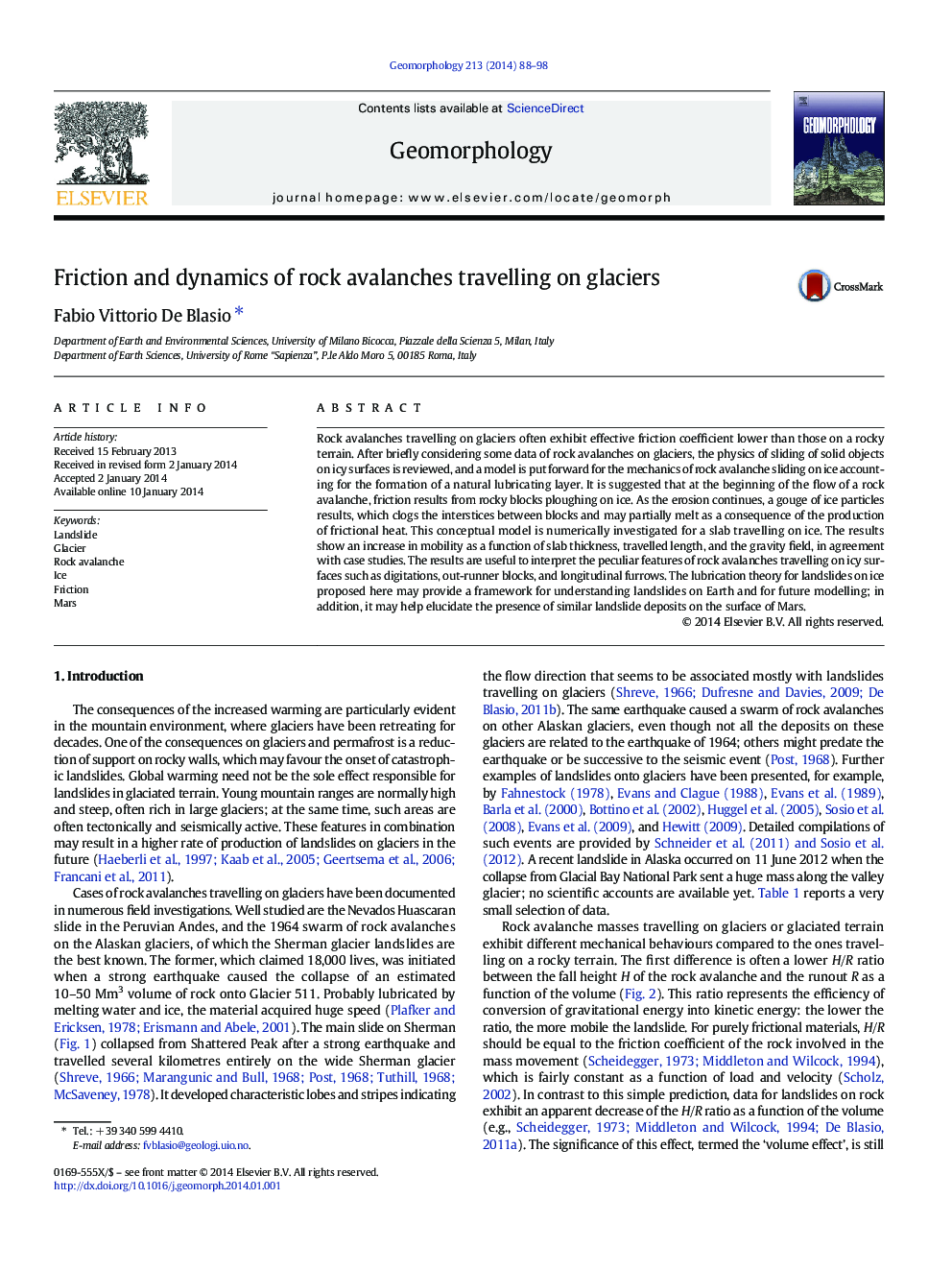| Article ID | Journal | Published Year | Pages | File Type |
|---|---|---|---|---|
| 6432490 | Geomorphology | 2014 | 11 Pages |
Rock avalanches travelling on glaciers often exhibit effective friction coefficient lower than those on a rocky terrain. After briefly considering some data of rock avalanches on glaciers, the physics of sliding of solid objects on icy surfaces is reviewed, and a model is put forward for the mechanics of rock avalanche sliding on ice accounting for the formation of a natural lubricating layer. It is suggested that at the beginning of the flow of a rock avalanche, friction results from rocky blocks ploughing on ice. As the erosion continues, a gouge of ice particles results, which clogs the interstices between blocks and may partially melt as a consequence of the production of frictional heat. This conceptual model is numerically investigated for a slab travelling on ice. The results show an increase in mobility as a function of slab thickness, travelled length, and the gravity field, in agreement with case studies. The results are useful to interpret the peculiar features of rock avalanches travelling on icy surfaces such as digitations, out-runner blocks, and longitudinal furrows. The lubrication theory for landslides on ice proposed here may provide a framework for understanding landslides on Earth and for future modelling; in addition, it may help elucidate the presence of similar landslide deposits on the surface of Mars.
